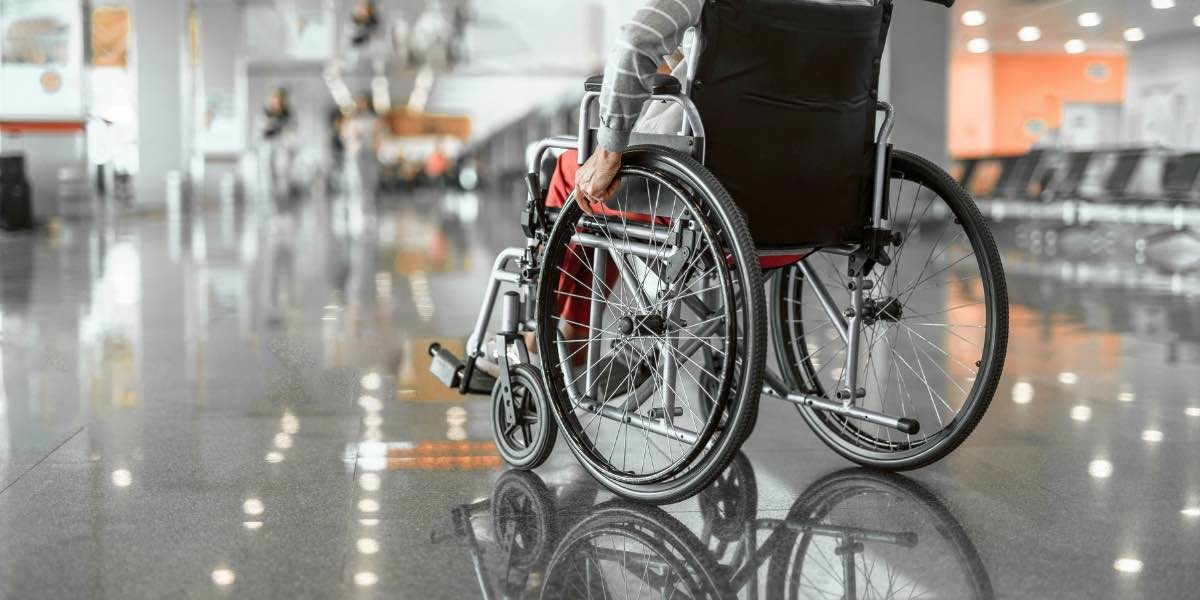Paratransit services are a crucial component of transportation infrastructure, providing individuals with disabilities the ability to travel independently. These services help bridge the gap where traditional public transit may fall short, particularly for those with mobility challenges. While many communities already rely on paratransit, the varying levels of service, accessibility, and funding across regions suggest that there is room for improvement. Given the importance of accessible transportation for individuals with disabilities, ensuring that paratransit accessibility becomes a national priority could significantly improve the quality of life for a large portion of the population, as well as promote inclusivity and equity across society.
Read also: The Imperative of Preventive Healthcare: Safeguarding Wellness
How Paratransit Supports Independent Living
For individuals with disabilities, the ability to access reliable transportation is essential to leading an independent life. Paratransit provides flexibility for people who are unable to use traditional public transit due to physical, sensory, or cognitive impairments. These services often include door-to-door or curb-to-curb transportation, making it easier for individuals to get to work, attend medical appointments, visit family and friends, or engage in community activities.
Access to paratransit helps reduce dependency on caregivers or family members, providing individuals with more control over their schedules and the ability to engage in social and professional activities. Without these services, many people with disabilities would experience increased isolation and barriers to participating in daily life. By improving paratransit accessibility, society can offer more opportunities for people with disabilities to live more autonomously and integrated within their communities.
The Current Challenges Facing Paratransit Services
Despite the importance of paratransit, there are several challenges that hinder its effectiveness and widespread availability. These issues are often linked to inconsistent funding, uneven service coverage, and administrative constraints. These limitations can make it difficult for people to fully rely on paratransit, creating gaps in service and undermining its potential benefits.
Limited Service Areas and Geographic Gaps
One of the most significant barriers to accessible paratransit is limited service coverage. In many rural and suburban areas, paratransit services are not available, or they only cover limited geographic areas. This gap in service can prevent individuals from accessing essential destinations, such as jobs, healthcare facilities, or educational institutions. As a result, many individuals in these areas may have fewer mobility options and face greater challenges in managing their daily lives independently.
In urban areas where paratransit services are more common, limited service areas can still restrict access, particularly when people need to travel across city lines or to locations not covered by the service. Expanding the reach of paratransit, particularly in underserved areas, could help reduce inequalities in transportation access.
Scheduling and Reliability Issues
Another challenge with paratransit services is scheduling flexibility. Most paratransit systems require passengers to schedule rides in advance, sometimes as much as 24-72 hours ahead of time. This scheduling window can be restrictive, especially for individuals who need to make unplanned trips or urgent appointments. Additionally, the need for advanced notice can make it difficult to accommodate last-minute changes in an individual’s schedule, which may be particularly problematic for individuals with dynamic or unpredictable needs.
Moreover, service reliability can be a concern. Delays, cancellations, or missed pickups can disrupt passengers’ schedules and result in increased frustration, particularly when individuals rely on these services to meet critical needs such as medical appointments or work commitments. These reliability issues can detract from the sense of independence that paratransit is meant to provide.
Why Paratransit Accessibility Should Be a National Priority
Paratransit accessibility is vital not only for improving mobility but also for promoting equity and inclusion. Making paratransit a national priority could ensure that people with disabilities have the same access to transportation as everyone else, regardless of where they live or their personal circumstances. Below are several reasons why it is important for paratransit accessibility to be prioritized at the national level.
Promoting Equity and Inclusion
Transportation is essential for enabling individuals to fully participate in society. When paratransit services are inconsistent or unavailable, individuals with disabilities are at a significant disadvantage. National support for paratransit would ensure that these services are equitable and accessible to all, regardless of geographic location. This approach would also signal a commitment to inclusion, ensuring that all individuals, including those with disabilities, are able to engage in the same social, economic, and cultural activities as their peers.
Equity in transportation is a fundamental part of social justice. By making paratransit a priority, governments could help reduce barriers to access that disproportionately affect people with disabilities. This would promote equal opportunities for education, employment, and healthcare, which are key aspects of living a fulfilling life.
Supporting Independence and Well-being
Reliable and accessible transportation contributes to better mental health and quality of life for individuals with disabilities. The ability to travel independently reduces feelings of isolation and dependence on others. Paratransit services play a crucial role in helping people achieve autonomy, as they allow individuals to make decisions about when and where to go, rather than relying on others for assistance.
Improving the accessibility of paratransit services could lead to greater physical and mental well-being, as individuals are more likely to engage in activities that contribute to their overall health, such as regular medical appointments, social gatherings, or recreational activities. Additionally, when people with disabilities have better access to transportation, they are more likely to participate in community life and have a higher sense of belonging.
Facilitating Economic Participation
Transportation is closely linked to employment opportunities. Inadequate transportation options can prevent individuals with disabilities from entering or staying in the workforce, which can contribute to economic inequality. Paratransit services help remove one of the significant barriers to employment, allowing individuals to access job opportunities and support economic self-sufficiency.
A nationwide commitment to expanding paratransit services could help increase economic participation among people with disabilities, creating a more diverse and inclusive workforce. This, in turn, would benefit the broader economy by ensuring that all individuals have access to the workforce, regardless of their physical or cognitive abilities.
Addressing the Needs of an Aging Population
As the population ages, the demand for accessible transportation will increase. Many older adults experience mobility challenges similar to those of individuals with disabilities, making paratransit services an essential resource for this growing demographic. By making paratransit a national priority, governments can address the transportation needs of an aging population, ensuring that older adults are able to live independently and stay connected with their communities.
A national push for improved paratransit services can help prepare for this demographic shift by expanding resources and infrastructure now, rather than reacting to the increased demand later. This proactive approach could improve the overall quality of life for seniors and individuals with disabilities, supporting their independence and well-being.
How Can Paratransit Accessibility Be Improved?
Improving paratransit accessibility on a national scale would require a multifaceted approach. This could include:
Expanding Service Coverage
Ensuring that paratransit services are available in all regions—particularly in rural and suburban areas—would address one of the most significant gaps in current transportation systems. Increased funding could help extend coverage and ensure that individuals in underserved areas have equal access to transportation.
Enhancing Scheduling Flexibility and Efficiency
Modernizing scheduling systems could make it easier for individuals to arrange rides with less advance notice. Implementing real-time tracking systems and offering on-demand ride services could help improve the flexibility and reliability of paratransit, ensuring that individuals are not left stranded or inconvenienced by long wait times.
Increasing Funding and Resources
Sustaining and expanding paratransit services requires adequate funding and investment. This includes not only increasing government funding but also supporting partnerships with private organizations and non-profits that provide these services. Such investments would ensure that paratransit remains a viable and reliable option for those who need it most.
Leveraging Technology
Investing in technology could enhance the efficiency of paratransit services. This includes the use of apps and mobile platforms for scheduling rides, tracking vehicles, and improving customer service. Integrating paratransit with other forms of public transit could help create a more seamless experience for passengers, allowing for easier connections between various transportation options.
Read also: Healthcare Access and Initiatives: A Comprehensive Analysis of Recent Developments in New York
Why Paratransit Accessibility Should Be a National Priority
Making paratransit accessibility a national priority can help address key issues of equity, independence, and participation for people with disabilities. By ensuring that transportation systems are inclusive and reliable, society can promote greater access to education, healthcare, and employment. A coordinated national effort to improve paratransit services would not only enhance the lives of individuals with disabilities but also contribute to a more inclusive, resilient, and equitable society. The need for accessible transportation is not just a matter of convenience—it’s a matter of fairness, dignity, and opportunity for all individuals.







